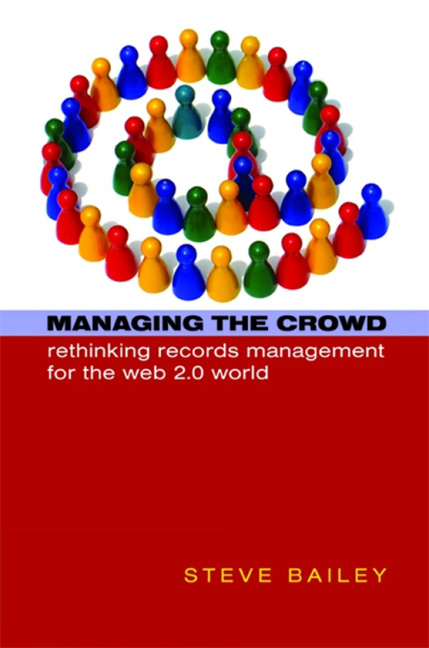Book contents
- Frontmatter
- Dedication
- Contents
- Foreword
- Preface
- Part 1 The Nature Of The Changing World
- Part 2 Is records management no longer fit for purpose?
- Part 3 Records Management.0 And The Future Of Records Management 121
- 11 The 10 defining principles of Records Management 2.0
- 12 Expanding on the principles
- Index
11 - The 10 defining principles of Records Management 2.0
from Part 3 - Records Management.0 And The Future Of Records Management 121
Published online by Cambridge University Press: 08 June 2018
- Frontmatter
- Dedication
- Contents
- Foreword
- Preface
- Part 1 The Nature Of The Changing World
- Part 2 Is records management no longer fit for purpose?
- Part 3 Records Management.0 And The Future Of Records Management 121
- 11 The 10 defining principles of Records Management 2.0
- 12 Expanding on the principles
- Index
Summary
Questions addressed in this chapter
• Are we really now in a position to be able to define what we mean by Records Management 2.0?
• What are the general principles that should define Records Management 2.0?
The difficulties of being specific at this point in time
Hopefully, the preceding chapters have helped shed light on how technology, through the rise of Web 2.0, has changed our world over the past few years and also demonstrated how many of the techniques and methodologies currently employed by records managers may cease to be relevant, or practical, in this changed world. What remains is to begin the process of defining how records management needs to change in order to meet these challenges; I suggest we call this Records Management 2.0.
In an ideal world, what would follow would be a step-by-step, practical guide to managing Web 2.0 based information according to records management principles, which could be picked up and adopted by any organization. Unfortunately this is not possible at this stage, not least because no-one, including myself, currently has all the answers. We are now operating outside the records management ‘comfort zone’ and merely finding new ways of saying the same thing, based on the same well worn concepts, is no longer applicable. I would be the first to admit that I don't even know all of the questions yet, let alone the answers, and it would be unwise and arrogant to pretend otherwise. What I have described in these pages has to be the start of a much bigger conversation and much longer journey. We must also be prepared to join with others as we travel and to engage with experts in web technologies, with other branches of information and knowledge management and, yes, with our users.
That does not, however, mean that the question of solutions and answers can be legitimately ducked altogether. The rest of this chapter and the one following present my initial thoughts and concepts: many may well prove impractical or unwise; some, while not in themselves achievable, may spawn related, more successful, future ideas; and maybe just one or two might find favour in their own right.
- Type
- Chapter
- Information
- Managing the CrowdRethinking records management for the Web 2.0 world, pp. 123 - 128Publisher: FacetPrint publication year: 2008



